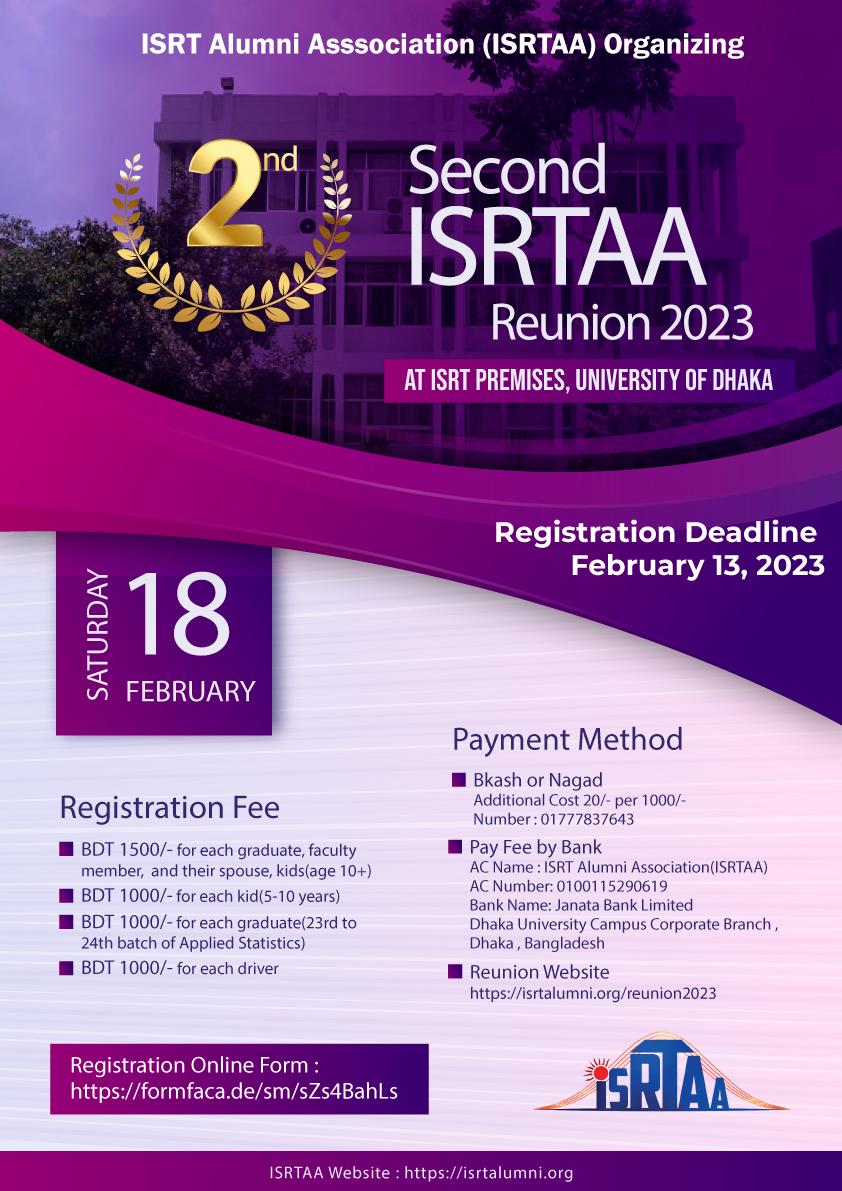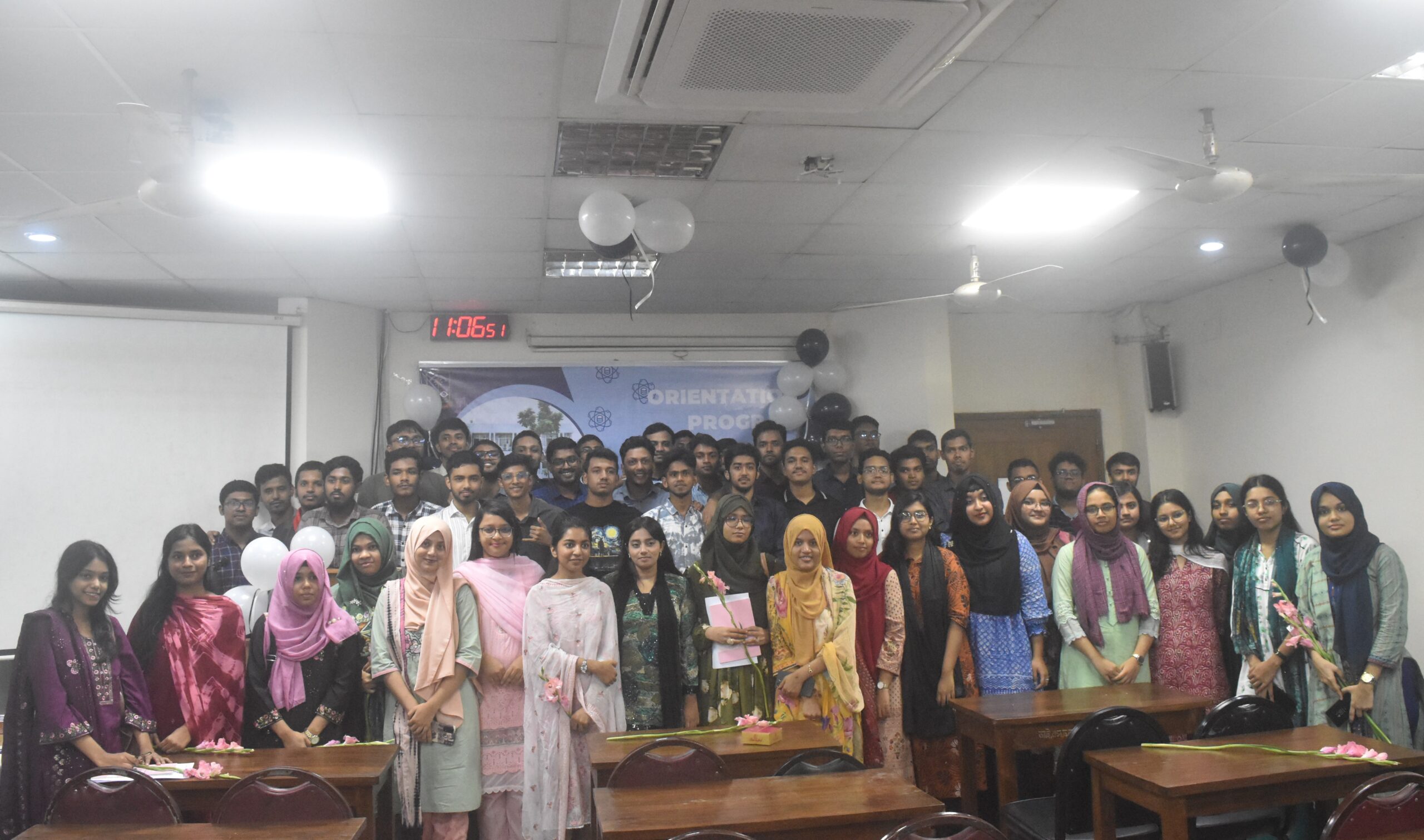Applied Statistics Seminar on Tuesday (February 7, 2023) at 12 PM
Abstract: The exchangeability of units between treatment groups is a key and typically untestable assumption for evaluating causal intervention effects in observational studies. Standard methods assuming exchangeability can yield biased treatment effect estimates if the assumption does not hold. Existing methods evaluate the sensitivity of treatment effect estimates to non-exchangeability due to unmeasured confounders only.
ISRT Alumni (ISRTAA) Reunion 2023 is on 18 February, 2023
ISRT Alumni (ISRTAA) Reunion 2023 will occur on February 18, 2023, on ISRT premises. All graduates are encouraged to attend the event. Details of the reunion event can be found on the website https://isrtalumni.org/reunion2023 and the reunion registration site (http://isrtalumni.org/reunion2023/reunion-2023-registration).
Special Applied Statistics Seminar on “Health Statistics in Bangladesh”
Prof. Dr. Syed Abdul Hamid (https://ihe.ac.bd/faculty/syedabdulhamid), Health Institute, Dhaka University, will give a talk on "Health Statistics in Bangladesh" at ISRT on February 27, 2023, from 1.30-2.30 pm. He is an expert on Health Statistics. This talk is being arranged on the eve of National Statistics Day to be celebrated country-wide on February 27, 2023.
Workshop on Research Methodology and Scientific Publication at ISRT for M.S. Students
Details can be found at https://www.isrt.ac.bd/workshop Date and Time: Sunday, 19th March 2023, 2:00 p.m. - 4:30 p.m. Venue: Institute of Statistical Research and Training (ISRT) , Room # 303 Technical Support:
Seminar on Classification and Clustering for RNA-seq data with variable selection
Speaker: Tanbin Rahman PhD, FDA, USA Title: Classification and Clustering for RNA-seq data with variable selection Abstract: Clustering and classification play an important role in identifying sub-types of complex diseases as well as building a predictive model in the field of medicine. In recent years, lowering of cost and high accuracy has made RNA-seq widely popular which
Applied Statistics Seminar on “Pairwise Accelerated Failure Time Models for Infectious Disease Transmission Within and Between Households”
isrt seminar roomAbstract: Pairwise survival analysis handles dependent happenings in infectious disease transmission data by analyzing failure times in ordered pairs of individuals. The contact interval in the pair ij is the time from the onset of infectiousness in i to infectious contact from i to j, where an infectious contact is sufficient to infect j if he
First match of ISRT in inter-department football tournament 2023 is on Monday, 10 July 2023 at 4:45 PM
ISRT is delighted to announce that the ISRT football team is going to play the first match in the inter-department football tournament 2023 on Monday, 10 July 2023 at 4:45
Second football match of ISRT is against the Department of Marketing on July 17, 2023
The second football match of ISRT will take place tomorrow! The opponent is the Department of Marketing. Time: 17 July 2023, 2:00 PM Venue: DU Central Field
Seminar on “Data Science Product Development In the (AWS) Cloud” at 2 pm on July 24, 2023
Speaker: Sheikh Samsuzzhan Alam, Senior Data Science Developer for Operation, Novartis Pharma, Czech Republic Venue: ISRT seminar room Date and time: 2 pm on Monday, 24 July 2023 Title: Data Science Product Development In
Applied Statistics and Data Science Seminar on August 7 on “Testing linearity in rapid microbiological method validation”
Title: Testing linearity in rapid microbiological method validation Abstract: Testing the linearity of a measurement system (MS) is required during its validation. Guidelines clearly discuss the appropriate design and analysis in







